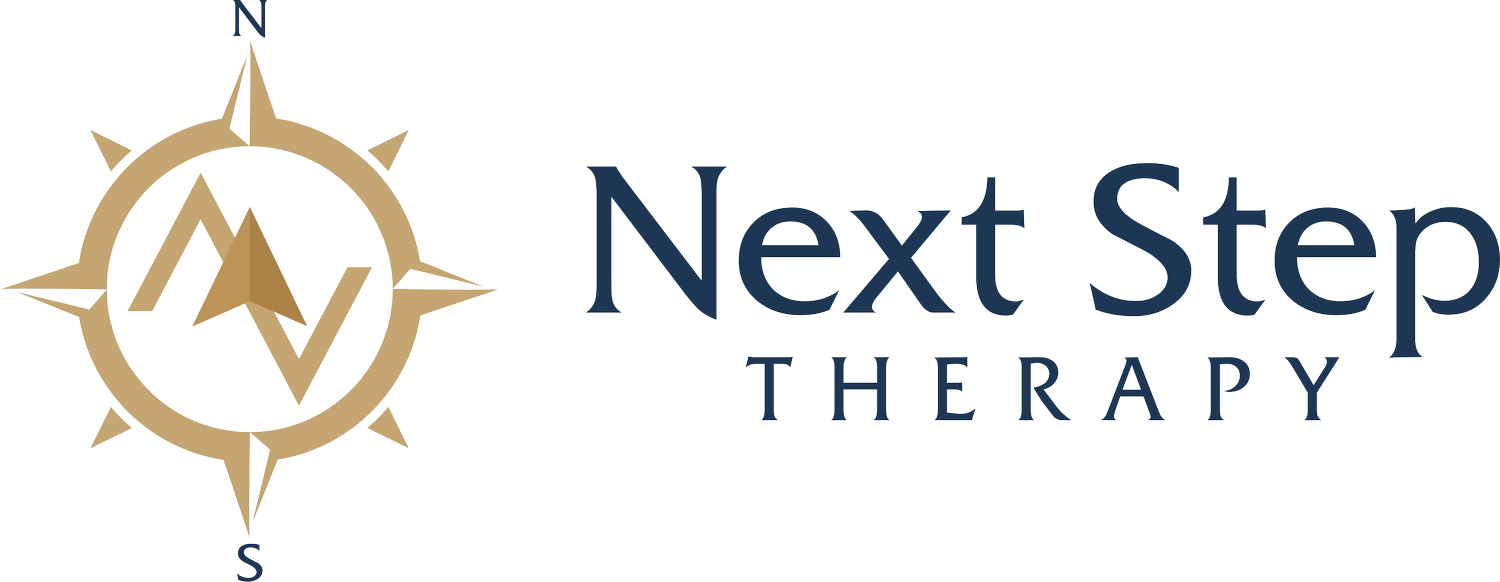Winning Mindset: Mental Performance Strategies for High-Achieving Professionals
Winning Mindset: Applying Mental Performance Strategies from Elite Athletes to Executive Success
Feel like you’re constantly juggling high-stakes decisions and intense pressure? Whether you’re a physician handling critical cases, a lawyer navigating complex negotiations, a finance pro steering big investments, or a tech leader driving rapid innovation, success isn’t just about working harder—it's about cultivating mental resilience. In the same way elite athletes train their minds for peak performance, you too can harness mental strategies to transform chronic anxiety and stress into sustainable achievements.
This article outlines how mental performance techniques from top athletes can help you thrive, no matter how challenging your professional environment gets. We’ll also explore how a depth-oriented approach can address not only surface-level stress, but the core patterns fueling it.
- Shared Challenges: Both athletes and high-achieving pros face burnout, high stress, and poor sleep, all of which compromise performance.
- Key Techniques: Discover strategies like visualization, emotional regulation, and structured focus sessions to stay at your best.
- Practical Tips:
- Work in 90-minute focus blocks with planned intervals for rest.
- Visualize upcoming challenges—like presenting to a board or facing a critical case—before they happen.
- Use controlled breathing and mindfulness to manage stress under pressure.
- Daily Routine: Begin each day with intentional mental and physical prep to maintain energy and composure.
Quick Insight: Research shows mental training—such as visualization and rest intervals—improves decision-making, focus, and resilience. Keep reading to discover how you can adapt these athlete-proven tactics to your professional life.
Mental Coach Explains How Pro Athletes Think
Mental Coach Explains How Pro Athletes Think
Our depth-oriented process for high-achieving professionals involves four stages:
- Performance Insight – Identifying how stress, fatigue, and mental blocks erode your output.
- Pattern Recognition – Spotting recurring habits (like perfectionism or chronic worry) that undermine success.
- Strategic Intervention – Integrating mental tools such as visualization, mindfulness, and emotional regulation.
- Sustainable Integration – Embedding these strategies into a daily routine for long-term resilience.
Below, we’ll highlight each stage and show you how to adapt these athlete-inspired techniques to conquer workplace anxiety, avoid burnout, and flourish in high-pressure scenarios.
Stage 1: Performance Insight – Staying Focused Despite Distractions
High achievers, like athletes, depend on their ability to concentrate. Constant interruptions can drain your mental energy. Studies suggest each distraction can cost you 23 minutes before fully regaining focus [2]. Here’s how to stay locked in:
- Work in Focused Blocks: Emulate athletes who train in short, high-intensity bursts. Schedule 90-minute deep-work intervals, then recharge with a brief break.
- Adapt the Pomodoro Technique: Work 25–30 minutes, rest for 5. This structure mirrors exercise intervals, preventing mental fatigue [1].
- Create a “Distraction List”: Whenever off-topic ideas pop up, jot them down for later so they don’t derail current tasks.
"Effective performance under pressure often depends on how well you can guard your focus against constant demands."
Stage 2: Pattern Recognition – Managing Emotions at Work
Just as athletes train to remain calm in heated competitions, high-achievers can benefit from recognizing and addressing emotional triggers. Chronic anxiety, if unaddressed, can disrupt leadership and impair logical reasoning.
- Label Your Emotions: Name the feeling—“I’m anxious about this negotiation”—and see it as data rather than a threat.
- Controlled Breathing: Try a 4-4-4-4 pattern: Inhale for four counts, hold for four, exhale for four, and hold for four again. This calms your nervous system.
- Reframe Challenges: Instead of “I might fail,” think “This is a chance to refine my approach.” This shift can drastically reduce stress [3].
- Focus on Controllables: Elite athletes zero in on aspects they can control—technique, effort, and mindset—rather than factors beyond their reach.
Anonymized Example: A senior litigator we worked with used controlled breathing before every courtroom appearance. Instead of spiraling about opposing counsel’s tactics, she labeled her anxiety and reframed high-pressure trials as “opportunities to apply my expertise under scrutiny.” This shift improved her composure and client outcomes.
Stage 3: Strategic Intervention – Handling Stress and Ensuring Proper Recovery
Recovery is essential for long-term success, whether you’re an athlete or a physician juggling critical shifts. Neglecting basic rest and downtime can lead to decision fatigue, affecting not just you, but also the team or patients relying on your clarity.
- Deep Breathing Targets: Aim for 500–1,000 mindful breaths daily, focusing on longer exhales [4].
- Establish Sleep Protocols: Shoot for 7–9 hours of quality rest to maintain mental acuity [5].
- Utilize Mindfulness Breaks: Take 2–3 minutes every couple of hours to relax muscles and clear your head. This improves stress management and resilience.
- Set Boundaries: Create clear lines between work and personal time, whether you’re on call as a surgeon or finalizing major financial deals.
"If you’re missing consistent recovery, it’s like training for a marathon without ever letting your muscles repair."
Stage 4: Sustainable Integration – Mental Practice Techniques
In this final stage, we cement high-performance habits into your daily routine. Just as athletes visualize winning moments, you can use mental imagery to handle tough negotiations, patient consults, courtroom arguments, or investor pitches.
Visualization for Work Success
Visualization isn’t merely daydreaming—it’s mentally rehearsing your success. Neuroscience shows it activates similar brain pathways as the actual activity [6]. Professionals in high-stress fields benefit by mentally prepping for key events:
| Scenario | What to Visualize | Key Focus Areas |
|---|---|---|
| Major Presentations | Composed body language, confident tone | Timing, clarity, audience engagement |
| Difficult Negotiations | Smooth dialogue, calm responses to objections | Strategic thinking, patience, readiness |
| Critical Decisions | Possible outcomes, best responses, resource allocation | Leadership, communication, integrity |
Visualizing to Manage Workplace Anxiety
Beyond performance, visualization is a tool for working through anxiety triggers. If you’re a lawyer who dreads final arguments or a surgeon wary of a complex procedure, picturing yourself navigating the scenario calmly and competently can reduce negative self-talk. Done consistently, this approach retrains your mind to handle high-pressure moments with steadiness.
- Outcome Visualization: Envision the perfect outcome, focusing on the feeling of achieving it.
- Process Visualization: Mentally walk through each step, anticipating possible obstacles and how you’ll respond.
"The brain can’t always distinguish between real and imagined events, so repeated mental rehearsal can significantly lower anxiety and boost confidence."
Sustainable Resilience at Work
Resilience isn’t about brute force—it’s about adapting and recovering gracefully. Like elite athletes who refine their technique rather than push through pain blindly, top professionals can refine mindsets for lasting success.
Anonymized Example: A finance director we coached recognized she hit diminishing returns after 11-hour days. By capping work at nine hours and scheduling daily mindfulness breaks, she not only slept better but also reported fewer trading errors and more poised discussions with stakeholders.
"Failures are stepping stones when you treat them as part of the growth process rather than proof of incompetence."
Reframing setbacks as lessons fosters psychological flexibility, which is vital in law, healthcare, finance, and tech—fields where even small errors can carry big consequences.
Recovery After Setbacks
Entrepreneurs and professionals alike benefit from pattern recognition to understand triggers for dips in performance. Shifting from self-criticism to problem-solving is a hallmark of mental resilience:
- Seek Feedback: An external perspective can highlight blind spots and refine your approach.
- Practice Self-Compassion: Replace “I messed up” with “I’m learning how to handle this better next time.”
- Monitor Emotional Regulation: Use short breaks or breathing exercises to reset before big decisions.
Staying Strong During Change
Organizational changes and unpredictable client demands can rattle even seasoned leaders. Mindfulness, value-driven choices, and a supportive network can keep you centered. Think of pivoting like an athlete adjusting tactics mid-game—your flexibility and calm can make all the difference.
Your Daily Performance Plan
While there isn’t a one-size-fits-all routine for high-pressure roles, here’s a sample structure you can customize. The goal is to find a sustainable rhythm that nurtures both productivity and well-being.
1. Morning Focus
Start each day with brief exercise (walk, yoga, or stretching) and a short mindfulness session. This combination helps you clear mental clutter, improving your readiness for tough tasks.
2. Strategic Work Sessions
Work in focused intervals of 60–90 minutes, free from email or phone notifications, then take a 5–10 minute reset. This approach mirrors how athletes alternate intense workouts with rest, maximizing consistent performance.
3. Visualization Blocks
Devote 5–10 minutes to mental rehearsal before high-stakes events. A surgeon might visualize a procedure flow, a lawyer might picture delivering key arguments, or a tech lead might mentally review a product pitch. Emphasize calm confidence and readiness for curveballs.
4. Structured Breaks
Incorporate short mindfulness or breathing sessions throughout the day. Close your eyes, breathe deeply, and let go of accumulated tension. This helps you approach each new task with renewed focus.
5. End-of-Day Reflection
Spend a few minutes reviewing what went well and where you faced challenges. Jot down a quick reflection—this fosters the self-awareness needed for continuous improvement.
Conclusion: Mental Skills Give You a Sustainable Edge
Embracing mental performance strategies from elite athletes can transform how you lead, innovate, and adapt in high-pressure fields like law, finance, medicine, and tech. Through our four-stage approach—Performance Insight, Pattern Recognition, Strategic Intervention, and Sustainable Integration—you can move beyond surface-level fixes to create a genuinely resilient mindset.
Whether you’re confronting daily anxiety, risk of burnout, or the constant demands of high-stakes tasks, these techniques can reshape stress into meaningful, sustained progress. The end result? More effective decisions, greater composure, and an approach to work that honors both your ambition and your well-being.
Remember: True high performance is about merging technical skill with mental clarity. Just as athletes refine their mental game to reach the podium, high-achieving professionals can use the same principles to excel in any environment—without sacrificing personal health or fulfillment.
If you’re ready to move from constant pressure to a winning mindset, consider exploring a depth-oriented, performance-focused approach that recognizes your full potential—and helps you unlock it.
Let’s explore how these mental performance tactics can address the deeper roots of stress and anxiety you face. Together, we’ll craft personalized strategies for a more resilient, purpose-driven path, turning everyday challenges into stepping stones for lasting success.











